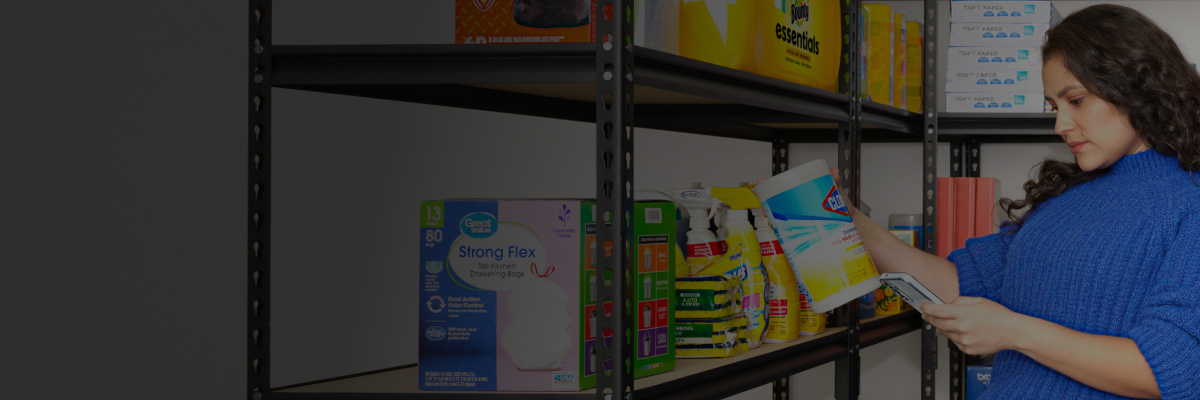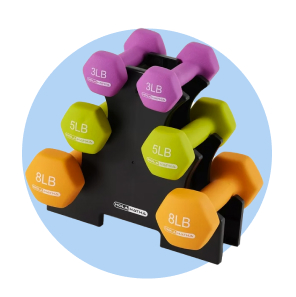
Business Security: 7 Key Strategies for a Safe Workplace
Protect your business
From security cameras to a simple lock on the door, you have a lot of options when it comes to business security. The right solution for your business depends on your specific needs, which may change as your business grows. Evaluating what’s critical today and what you may come to need is the first step in evaluating a security system that can support you over time.
To help you get started on the right foot, we’ve pulled together the following list of strategies for securing your workplace.

1. Invest in business security cameras
The facts are hard to ignore: security cameras deter crime. According to a study conducted by the University of North Carolina at Charlotte, 60% of convicted burglars will seek another target if they spot a security camera. This makes getting a security camera a good first step in securing your business.
Business security cameras come in all shapes and sizes, with many features designed to accommodate a long list of use cases. To decide what kind of camera is best for your business, it helps to answer the following questions.
What are your security needs?
Think about what you’re trying to accomplish with security cameras. Are you hoping to deter after-hours theft, secure public areas or guard against shoplifting? Perhaps all of the above?
Start by determining which areas of your business require monitoring. Your priority should be ensuring the safety of your employees and customers. This means putting cameras in places where they can address potential threats and hazards to anyone on the premises. You should also cover parking lots and other areas where people congregate.
To secure against break-ins, monitor entrances, loading docks and other access areas. Also consider adding camera coverage to any area where cash exchanges hands, like ATMs or cash registers.
How much bandwidth will you need?
In the simplest terms, bandwidth refers to the speed and quality of information routed between devices at any given time. The number of cameras in your system, the distance between them, the quality of room lighting and the overall quality of the video the cameras are capturing all impact your available bandwidth.
The impacts on bandwidth can be mitigated in a number of ways. Improving room lighting is one, as this will increase the quality of images captured by the cameras without needing to increase the image resolution. You can also increase bandwidth by storing videos in the cloud since this saves the system from having to communicate with local hard drives. Motion-sensing cameras can also increase your bandwidth, since these will only be active when they detect motion, as opposed to scanning continuously.
Do the cameras integrate with existing systems?
If you already have a security system, you may be able to enhance it with new cameras rather than completely replacing it. The challenge is ensuring your new cameras will integrate with your existing system.
Keep your current tech in mind as you shop for new cameras. If you have a wired system, for example, your new cameras will need to plug into it. If it’s a wireless system, will it recognize the new cameras? Will your existing system even accept upgrades? All of these considerations must be taken into account.
To continue asking questions, read 5 Things to Consider Before Investing in Business Security Cameras.

2. Security camera features to look for
Depending on the area you need to protect, your business could have anywhere from a few to a few dozen business security cameras. Some may be outdoors, while others may need special features, like night vision. One camera style may not suit each of your locations, so it helps to look at the features available to determine the best fit for your business.
High-resolution video
You’ll want to make sure your cameras are capturing good video quality. For most businesses, a video resolution of 1080p provides the best balance between quality and cost.
While it is possible to buy cameras that produce higher-quality video than 1080p, the costs associated with these cameras increase exponentially. Not only are the cameras themselves more expensive, but the storage needs can be immense, as the video files are much larger.
Night vision
Most break-ins and thefts happen at night, when there are fewer people around and the cover of darkness provides some anonymity for intruders. You can mitigate that advantage with night vision cameras.
“Night vision” refers to one of three different technologies:
Infrared cameras use infrared light that is not visible to the naked eye to illuminate dark areas. The cameras can detect this light and produce an illuminated image.
Low light amplification uses sensors to increase the illumination of ambient light so that details are more visible.
Thermal imaging uses heat sensors to detect warm bodies or other disturbances.
Each technology has pros and cons. Infrared cameras work best in variable lighting conditions, while low-light cameras can produce greater detail in low light. Thermal imaging doesn’t require any light at all, but lacks identifying detail. Which feature you need will depend on your location and conditions. You can purchase cameras with all three technologies, but these can be prohibitively expensive.
Motion detectors
Cameras with motion detectors can be useful when you want to conserve bandwidth or storage space. These cameras will only record when they detect motion or changes in light, making them less expensive to operate than cameras that record continuously.
To learn more about video camera features, read The Best Security Cameras for Business Have These 6 Features.

3. Invest in complete business security systems
Cameras alone may not be enough to secure your business. Only you can decide what matters most, but there are a range of security technologies available to help protect your business. Which features you require will depend on a number of factors.
How do you define business security system success?
Think about what you’re trying to accomplish with a security system. What behavior or activity are you trying to reduce? If you own a retail location, perhaps you’re trying to deter theft. This will require a different security approach than if you own an industrial business and you’re trying to reduce exposure to hazards or tampering with critical machines.
Considering your needs when shopping for a security system will help you find the features you need and avoid the ones you don’t.
Your budget
Ultimately, the biggest factor to consider when purchasing a new security system will be how much you can afford to spend. Some estimates suggest that you should look to your insurance premiums as a starting point.
The three biggest factors impacting the costs of a security system are:
Hardware: Cameras, monitors, alarms, sensors, locks and other hardware are typically the biggest expense associated with a security system.
Installation: Unless you are planning to install the system yourself, you will also need to account for installation costs.
Maintenance and monitoring: Finally, all security systems will require periodic maintenance. Wireless systems will require battery changes, for example. Monitored systems will incur an ongoing cost associated with the monitoring service.
Carefully consider your valuable budget when evaluating security systems. You may not need the biggest and best system available, and keep in mind that you can add components to your system as budget allows.
Building layout
The locations of doors, loading areas and windows will vary from building to building, as will the arrangement of furniture and partitions within the structure.
Start by considering the outside of your building and any access points. What areas outside need to be secured? How do you plan to limit access to the inside? The answer to these questions will determine the location and number of external security cameras as well as what kinds of locks and sensors you may require at entryways.
Next, consider the size of your building and the number of doors. This will tell you how many locks you need to secure access and how extensive your security needs may be.
Then you should evaluate the inside of your business for any potential blind spots. This will inform which areas need to be monitored and how.
Finally, you will want to note any sensitive areas. Are there limited-access rooms within your business or areas where cash or other valuables are stored? These will require special attention.
For more factors to consider, read Business Security Systems: 7 Factors to Consider Before Investing.

4. Purchase an alarm system
Alarm systems, like camera systems, come in multiple varieties. Choosing the right system for your business depends on your specific needs, budget and building size.
To help you drill down on exactly which alarm is best for your business, let’s take a look at the common types of alarm systems.
Wired alarm systems
Wired alarm systems are what they sound like. Each component of the system is connected to each other—and the central control panel or computer—with a physical wire. This makes the system much more robust than a wireless system, but it can also make it more costly. The actual wires must be installed and connected to a central unit, which means it’s less likely you can install this type of system yourself.
Wired systems also run on electricity, which could mean that if your business loses power, your system will go down without a battery backup.
Wireless alarm systems
With a wireless alarm system, the individual components use wireless transmitters instead of wires to stay connected. This makes the system far more flexible and less costly. You can typically install a wireless system yourself, and the components can be placed almost anywhere so long as they’re within transmitter range.
Wireless systems are typically less expensive at the outset, but the cost can balloon over time as batteries must be replaced.
Hybrid systems
A hybrid system attempts to offer the best of both options. Components may be wired together for greater stability, but also equipped with wireless transmitters in case of a power outage.
Hybrid systems also include systems with a mix of wired and wireless components.
Monitored
Monitored business security systems are typically watched over 24/7 by a security team within a company or an external monitoring provider. In the event of an intrusion or an alarm, a dispatcher will take action, either calling the business owner or the police.
Monitored systems can be expensive, but provide the peace of mind of knowing that your business is being watched around the clock.
Unmonitored
An unmonitored system is not actively watched. Instead, it relies on an alarm to notify you that something has gone wrong. Unmonitored systems can also be programmed to take a specific action if an alarm is indicated, like turning on a light or sounding a siren.
To learn more about alarm systems, read Business Security Alarm Systems: A Buyer's Guide.

5. Consider security monitoring
With more than 11,000 private security companies in the United States, there are plenty of options to choose from. Whether you plan to use one of those thousands of companies or install a monitored security system yourself, it’s worth looking at the key features of monitoring systems before you make a choice.
Real-time monitoring
Real-time monitoring provides nearly instant alerts in the event something goes wrong. This can range from a call from a monitoring company dispatcher to an alert on your mobile phone. Real-time monitoring is typically available for almost any kind of alarm system, whether you installed it yourself or hired an outside company.
Remote access
Remote access allows you to activate security features without having anyone physically on-premises or actively monitoring your security system. In the event of an alert, you can lock or unlock doors or gates, turn on lights or sound an alarm. This feature is especially useful for businesses that don’t have employees on site at all times.
Integration
Integration is an expected feature of systems from a third-party security company, but it may be a secondary consideration if you install a system yourself. Simply put, integration means that all of the components of your security system can communicate with one another and work in concert. This would mean an alarm can also turn on lights or lock doors.
For more information about business security systems, read The Owner's Guide to Business Security Monitoring.
6. What to look for in business security solutions
Before you’re ready to make a choice about what kind of security system to install (or have installed), it might be helpful to review the types of features available with a modern security system in addition to cameras and alarms.
Access control
Whether you have one employee or one hundred, you need a way to ensure that only the people you authorize can enter your business. Access control methods are designed to restrict entry to doors, gates and other access areas.
A typical access control feature in a business security system would be a keypad next to the main door or gate. This would limit access to only those who have the proper code. Card readers, magnetic locks, mechanical or digital keypads and fingerprint scanners are other types of access control.
Emergency alerts
An emergency detection system can alert you in the event of emergencies like a fire or extreme weather. These systems typically involve an audible alarm and flashing lights to alert the hearing impaired.
Your emergency alert can also be tied into a security system to allow the two to “talk” to each other. For example, in the event of a fire, the emergency system could tell the security system to unlock access doors to allow people to escape.
Cybersecurity
A business’s data is often as valuable, if not more valuable, than its physical goods. That’s why many modern security systems include cybersecurity measures as a part of their offerings.
Cybersecurity involves protecting customer data, proprietary information and financial details. Solutions include a combination of antivirus tools, malware protection and firewalls to secure access to computer systems.
To learn more about business security systems, read 10 Things to Look for in Business Security Solutions.
7. Balancing security & privacy
Finally, it’s worth addressing a common concern about security systems: invasion of privacy. In spite of the many benefits of business security systems, some employees can be sensitive to security measures and monitoring. Studies also suggest that employees start to act out and break rules when managers track them too closely.
Cameras, especially, can communicate an air of distrust. They can also contribute to what’s called productivity paranoia—a tendency among managers to believe workers are less productive than they actually are.
That being said, many employees are in favor of security methods so long as they are handled responsibly. According to Pew Research, 54% of employees would find cameras and long-term footage retention acceptable if employers maintain certain expectations of privacy.
Build an expectation of privacy
To balance effective security and measures that alienate your workforce, it helps to build in an expectation of privacy. Employees are generally in favor of security measures enacted in public spaces, access areas or places where valuables are stored or changed hands. Where they might have an issue with cameras and other security measures is in private spaces or with security measures that are utilized to track performance.
Think legally & ethically about security
Before installing a security system, examine any ordinances or laws that restrict its use. Surveillance legislation often varies between state and federal levels, and there can be further variance between unionized and non-unionized workplaces.
Cameras should generally have a specific purpose, such as to deter theft or protect entryways. Recorded videos should be controlled carefully and accessible by only select employees. Videos should not be stored indefinitely. Set a specific time period for storage, say one or more months, and then delete the footage afterward.
Overall, the goal should be to install a security system that addresses your security needs, but that isn’t open-ended. Security to prevent certain actions is preferable to security for the sake of security.
For more about the ethics and legalities of security systems, read Office Cameras: Balancing Privacy and Safety in the Workplace.
Shop for security solutions at Walmart Business
At Walmart Business, we know you have a lot of options when it comes to securing your business. That’s why we stock a variety of products at low prices so you can get all of your must-haves in one place and focus on running your business. Sign up for a Walmart Business account to get access to features like bulk buys, free shipping on orders over $351 and multiuser accounts with shared payment options. Already have an account? Get access to expanded features like 2% in Walmart Business Rewards2 and Spend Analytics to help you track your spending with a Walmart Business+ membership, plus save over $500/year.3


Limited-time offer
Unlock your special promo code
Stay informed on Walmart Business news & get $20 off a $100 purchase!1
1Minimum order of $100. Promo code can be used one time & may not be combined with other offers. Offer not transferable & void where prohibited by law. Customer responsible for all applicable taxes. Offer expires 12/31/2025 at 11:59pm PT. Further restrictions apply. See terms at checkout for details. Promo code offers available in limited quantities. While supplies last.
1 Excludes most Marketplace items, freight and certain location surcharges.
2 Rewards can only be used toward future purchases on Walmart Business. Additional terms apply.
3 Savings based on 1 free $35+ delivery order vs. $9.95 fee and 1 free shipping order under $35 vs. $6.99 fee biweekly, plus 2% Walmart Business Rewards on monthly order >$250 (average value of $400).
Exciting news awaits
Hear firsthand about new products, features & promotions.
By clicking submit, you agree to receive emails about Walmart Business and acknowledge you have read and agreed to our Terms of use and Privacy Policy.










